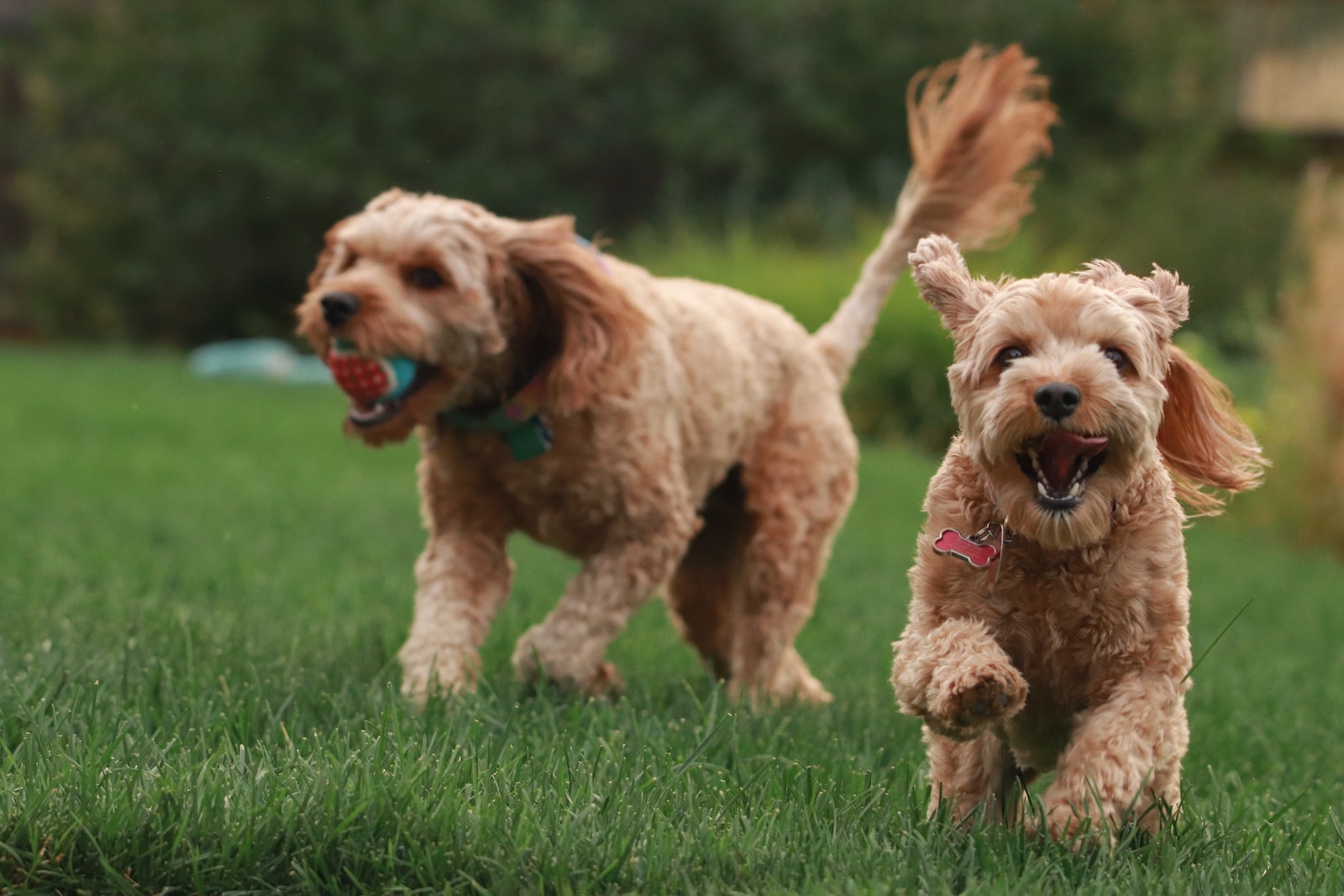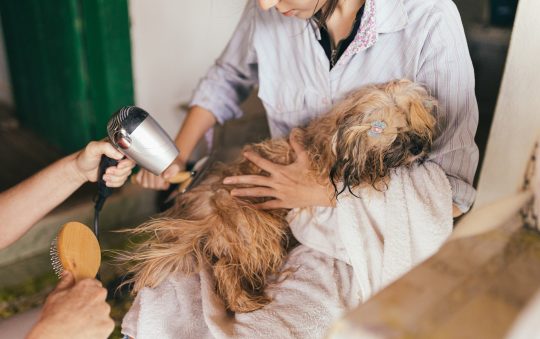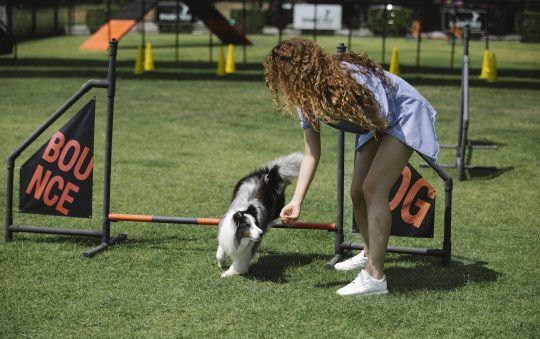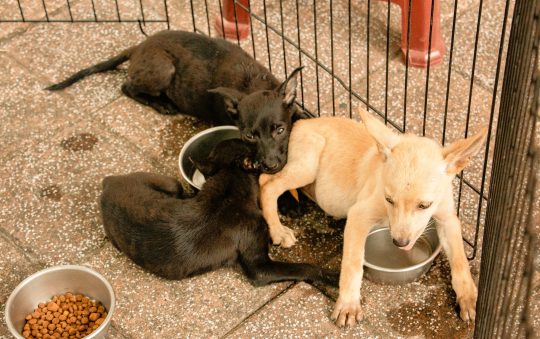- Why Socialization is Important for Dogs and How it Benefits their Overall Well-being
- Starting Early The Key to Successful Dog Socialization
- Using Positive Reinforcement in Dog Socialization
- Exposing Dogs to Different Environments and Situations
- Incorporating Playtime in Dog Socialization
- Common Mistakes to Avoid in Dog Socialization
- Recap of the Importance of Dog Socialization and Tips for Effective Socializing
Why Socialization is Important for Dogs and How it Benefits their Overall Well-being
If you’re a dog owner, you know how important it is to take good care of your furry friend. A big part of that is socialization, which plays a crucial role in your dog’s overall well-being. But what exactly is socialization for dogs, and why is it so important?
Socialization for dogs refers to the process of exposing them to different people, animals, environments, and situations in a positive and controlled way. This helps them develop the skills they need to navigate the world around them with confidence and ease.
In this blog post, we’ll explore the benefits of socialization for dogs, how to start early for successful socialization, using positive reinforcement in dog training, exposing dogs to different environments and situations, and the importance of playtime. We’ll also discuss common mistakes to avoid during dog socialization and how to overcome any challenges that may arise.
Whether you have a puppy or a newly adopted adult dog, learning how to socialize your furry friend effectively is essential. By following our tips and tricks, you can help your dog become a happy, well-adjusted member of your family. So let’s dive in!
Starting Early The Key to Successful Dog Socialization
Socialization is a fundamental part of any dog’s life and is essential for their overall well-being. It plays an important role in helping them develop healthy behaviors, as well as form positive relationships with other animals and humans. Starting early with socialization is the key to successful long-term socialization and integration of your pup into the family.
When it comes to socializing puppies, the earlier you start, the better. This is because the puppy’s critical socialization period happens between the ages of 3 to 12 weeks old. During this time, they are more open to new experiences and more willing to learn how to interact positively with other animals and people. Unfortunately, this window of opportunity closes quickly and by the time puppies reach 16 weeks old, they may already be wary of unfamiliar sights, sounds, and smells.
To ensure that your pup has the best chance at successful socialization, it is important to expose them to different environments and situations while they are still young. Positive experiences during puppyhood can help reduce their fear of new things later in life.
When socializing puppies, it is important to take things slowly and to always focus on positive reinforcement rather than punishment. Provide plenty of treats, praise, and love for good behavior in order to create a safe and secure environment for your pup to learn in. Gradually introduce them to different types of stimuli such as new people, animals, places, sounds, etc., but make sure it is done in a way that does not overwhelm them or cause stress. Training sessions should be kept short and fun in order to have maximum effectiveness.
Finally, it is important to remember that every pup learns at their own pace. If your pup gets overwhelmed easily or is not responding well to your approach, it may be best to take a step back and try again another day. Socializing should always be an enjoyable experience for both parties involved!
Using Positive Reinforcement in Dog Socialization
Positive reinforcement training is an effective way to socialize your dog and ensure that you’re bond with them is strong. Many owners shy away from this type of training, but it can be just as powerful as more traditional methods of aversive training, if not more so. In this section, we’ll discuss the benefits of positive reinforcement training, examples of positive reinforcement techniques for dog socialization, and how to use this method for effective dog training.
The main benefit of positive reinforcement training is that it reinforces good behaviour, rather than punishing bad behaviour. This means that your dog will learn to repeat behaviours that are rewarding, such as being able to go outside to play or being petted for good behaviour. Positive reinforcement also helps to build a trusting relationship between you and your dog, as it encourages them to view you as a source of reward instead of punishment. This leads to an overall better-behaved and happier pet.
Positive reinforcement techniques for dog socialization can include offering your dog treats when they display desired behaviours such as sitting or lying down on command. You can also offer verbal praise, such as saying “good boy” or “good girl” when they perform a desired behaviour. Petting and cuddling are also forms of positive reinforcement that will help your dog to feel relaxed and secure. It’s important to remember that all forms of positive reinforcement should be given immediately after the desired behaviour has been displayed in order to be most effective.
When using positive reinforcement for effective dog training, it’s important to be consistent with rewards. Make sure that you only reward behaviours that you want your dog to repeat and ignore any behaviours that you don’t want them to display. This way, your dog will learn which behaviours are acceptable and which ones are not. It’s also important to keep sessions short and varied in order to avoid boredom and maintain focus. This way, your dog will be more likely to remember the lessons they’ve learned during the session.
By following these simple tips and using positive reinforcement for effective dog training, you can ensure that your pup is well-socialized and well-behaved. With patience and consistency, you can have a happy and healthy pet who knows exactly what is expected of them.
Exposing Dogs to Different Environments and Situations
Exposing dogs to different environments and situations is an important part of socialization. The goal of socializing a dog is to get them comfortable and confident in various different settings, from the familiarity of their home to the unfamiliarity of a busy street. The idea is to make sure that your dog won’t be anxious or afraid in any situation, especially if you’re going to be out in public with them. Environmental enrichment is essential for successful dog socialization as it helps to keep them mentally stimulated and encourages positive behaviors.
Environmental enrichment includes exposing them to different sounds, scents, textures, and experiences. When done correctly, environmental enrichment allows a dog to learn how things work in the world and feel more at ease in their surroundings. This can be done by taking your pup on walks in differently-populated areas, introducing them to different people and animals, slowly easing them into more stimulating environments, and so on. This will also help your pup become better at focusing on you rather than getting distracted by the sights and sounds around them.
One way to expose dogs to different environments and situations is to take them on walks in varying locations. You can start with quieter places such as parks or hiking trails and work your way up to busier places such as downtown streets. Additionally, introducing them to different people, animals, toys, objects, and even foods can help desensitize them and make them more comfortable around new things. You can also provide your pup with different textures by letting them play in grass, sand, snow, or even puddles. This will allow them to become used to these different surfaces and learn how to interact with them safely.
Fear and anxiety can be a major obstacle when it comes to socializing a pup or an adult dog. If they are not used to being exposed to new environments or situations, they may become overwhelmed or scared. To help overcome this fear and anxiety, it’s important that you stay calm and patient when introducing your pet to something new. Speak soothingly and provide rewards such as treats or belly rubs when they show signs of comfort in the environment or situation you’ve exposed them to. This will help build their confidence and encourage positive behaviors while simultaneously helping them overcome fear and anxiety.
Exposing dogs to different environments and situations is an important step in successful dog socialization. The goal is for your pup or adult dog to feel at ease no matter what situation they are presented with, from the familiarity of their home to the unfamiliarity of a busy street. Environmental enrichment should be combined with positive reinforcement techniques such as providing rewards for positive behaviors along with patience and understanding when your pet gets scared or anxious during this process. By following these tips you’ll be well on your way towards successful dog socialization!
Incorporating Playtime in Dog Socialization
Playtime is an essential part of dog socialization. From chasing a ball to tugging on a toy, playing with your pup encourages socializing in a variety of ways. Playing with your dog provides them with the opportunity to learn how to interact with other dogs, people, and their environment. It also serves as a great way to bond with your dog and is an important part of their physical and mental stimulation.
When it comes to the importance of play in dog learning and development, it plays a significant role in their physical, mental, and emotional growth. During play, dogs have the opportunity to experience different situations, learn new skills, practice problem solving, and express themselves. It’s also an effective way for them to build confidence and trust in their owners. Playtime can help strengthen the bond between you and your pup, as well as teach them how to control their impulses when interacting with others.
Different types of play can be used to encourage socialization in dogs. For example, interactive games such as fetch or hide-and-seek provide an excellent opportunity for your pup to develop their problem-solving skills. Additionally, participating in activities such as agility or flyball encourages them to interact with other dogs and people in a positive manner. Toys or treats can also be used during playtime to get your pup excited and engaged in the activity.
Playtime can also be used as a tool for effective dog training. It’s important to note that playtime should always be positive and fun for both you and your pup. When introducing new commands or behaviors, be sure to use positive reinforcement techniques such as treats or verbal praise during playtime. This will help your pup learn faster while also strengthening the bond between you and your pup. Additionally, make sure that you practice patience when training your pup and always reward good behavior with positive reinforcement.
Incorporating playtime into dog socialization is key for your pup’s overall well-being. Not only does it provide them with the opportunity to learn new skills, but it also encourages them to interact with new people and environments in a positive manner. Through the use of positive reinforcement techniques and interactive games, you can help ensure that your pup is properly socialized in a fun and safe way.
Common Mistakes to Avoid in Dog Socialization
Socialization is an important part of your dog’s development, but it’s important to keep in mind that mistakes can happen during the process. It’s important to be aware of them, so you can avoid making them or have a plan in place when they do occur.
Common mistakes during dog socialization may include over-exposure, too much too soon, or introducing new experiences too quickly. Over-exposure can cause your dog to become overwhelmed and stressed, while too much too soon can overwhelm your pup with too much stimulation. Introducing new experiences too quickly can result in fear and anxiety, especially when dogs are exposed to scenarios that make them feel unsafe or vulnerable.
To avoid these common mistakes, it’s important to start socializing your pup slowly and gradually. Start by exposing your pup to familiar environments and situations first before introducing any new ones. Make sure to reward your pup for positive behavior and keep sessions short and sweet. With positive reinforcement, your pup will learn to trust and enjoy the process of socializing with others.
It’s also important to be aware of any signs of stress or anxiety in your pup. If your dog starts to act out in a particular situation, it’s best to remove them from the environment right away. Allow your pup some time to relax and calm down before returning to the situation. If your pup exhibits fear or aggression in a certain scenario, it’s best to avoid that scenario altogether for the time being.
If things go wrong during socialization, it’s important to stay calm and patient. Don’t punish your pup for bad behavior, instead take the time to understand why they acted that way and try to come up with a plan of action that both you and your pup are comfortable with. With patience and understanding, you can help your pup learn how to properly socialize with others in a safe and healthy way.
Socialization is an essential part of raising a well-rounded canine companion, but it’s important to keep in mind that mistakes can happen during the process. By understanding common mistakes and taking steps to avoid them, you can help ensure that your pup has a positive experience while learning how to interact with other people and animals.
Recap of the Importance of Dog Socialization and Tips for Effective Socializing
Socializing your dog is essential for their overall well-being. By starting early, using positive reinforcement, exposing them to different environments and situations, and incorporating playtime, you can effectively socialize your dog and help them become more confident, happy, and well-adjusted. Remember to avoid common mistakes such as rushing the process or exposing them to overwhelming situations too quickly.
Successful dog socialization requires patience, consistency, and a willingness to adapt to your dog’s needs. By following the tips and tricks outlined in this blog post, you can create a positive and enjoyable socialization experience for your dog. The benefits of successful dog socialization are numerous, including improved mental and emotional health, better behavior, and stronger bonds between you and your furry friend. So don’t wait any longer – start socializing your dog today!





